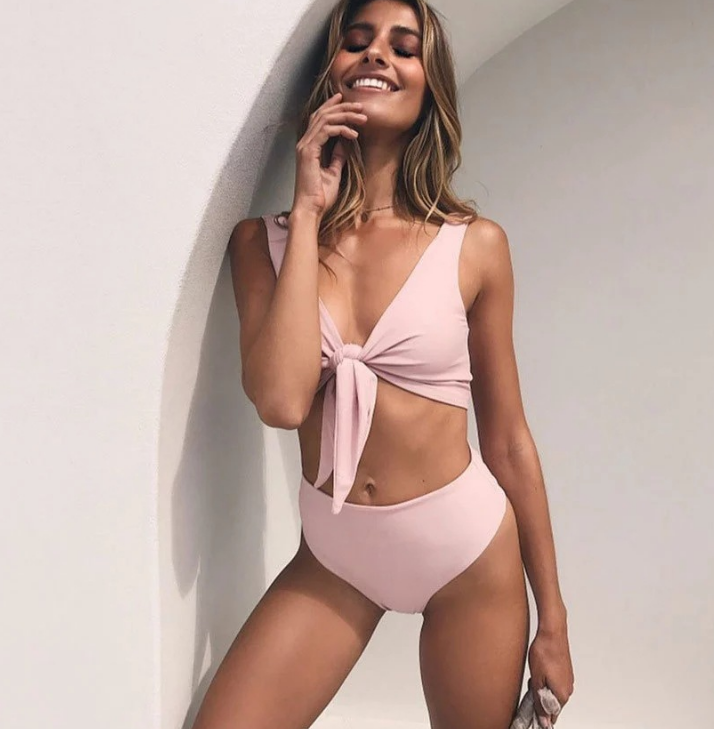alignment ·
art of yoga ·
ashtangayoga ·
breath ·
chanting ·
hathayoga ·
iyengaryoga ·
jivamuktiyoga ·
leggings ·
meditation ·
mindfulness ·
vinyasayoga ·
yoga ·
yogaequipment ·
yogaphilosophy ·
yogaproducts ·
Arts of Yoga
Arts of Yoga
In the first blog post I talked about resolutions, which in my case will be yoga. I spent almost three weeks on what kind of yoga is best for me and my pre-existing condition (back problems). For this I was on the internet a lot to get some direction once. I have summarized the best articles or summaries for you below. Next, I went to the gym where I looked at classes of the different types. In the text below, I often use the word asanas, which means sitting postures, or more generally postures.
At the end of this post I have compiled a list for you, for your equipment, which will lead you to the product on classyfashion24.com
Hatha Yoga
is the foundation of most styles of yoga practiced; strictly speaking, every form of physical yoga is based on hatha yoga.Ha stands for the sun and tha for the moon. The term yoga itself roughly translates as bringing together. So Hatha Yoga means bringing together the opposing energies within us. When these are in ideal balance, the practitioner experiences the state of yoga - the stated goal of all yogic practices. In our latitudes, Hatha is also used as a synonym for a more traditional yoga direction, in which the asanas are held longer and there is little dynamism. You will probably not find music in Hatha classes, as the focus is on correct practice - without distractions. There is also plenty of room for breathing exercises and meditation.
What you can expect: Plenty of quiet and time for mindful practice and reflection
Suitable for: Beginners and advanced practitioners for whom a good foundation in their yoga practice is important.
Iyengar Yoga
It's all about absolute precision. Iyengar Yoga goes back to B.K.S. Iyengar, one of the most influential yoga teachers we know. It is also a form of Hatha Yoga. It is also a physical form of yoga, combined with a focus on breathing and meditation. Iyengar teachers teach exact alignment. This means that every posture is discussed and felt down to the smallest detail. Because all bodies are different, Iyengar yoga uses numerous tools to assist in experiencing the asana in its entirety.
What you can expect: Yoga classes that are completely devoid of flowing elements and place exact alignment at the center of the practice. Highly trained instructors.
Who is it for: For all yoga practitioners who really want to discuss and understand the asanas. Iyengar is also a valuable tool for any yoga teacher.
Vinyasa Yoga
In Vinyasa Yoga, breath and movement are synchronized with each other. This creates a flowing sequence. Perhaps you know Vinyasa classes also under the term Flow Yoga. What sounds very modern and western is actually an old tradition. The idea behind it is mindfulness: the individual asanas should be connected with the breath and a pre-set intention. The breathing that is used for this is called Ujjayi breathing. In this, the breath flows through the nose. The special thing about this is that it closes the glottis, which allows the breath to be controlled. The idea behind Vinyasa is to be aware and equally aware of every moment of movement, thereby focusing the mind on intention.
Here's what you can expect: A dynamic yoga practice in which the asanas are connected in flowing movements. You may well work up a sweat.
Who is it for:Interested beginners* and advanced yoga practitioners. Anyone who enjoys a more athletic practice.
Ashtanga Yoga
Ashtanga means eight limbs, which include ethical living, meditation and pranayama; it is a form of vinyasa yoga. This means that here, too, the movement is combined with the ujjayi breath. Otherwise, however, Ashtanga Yoga has little overlap with a Vinyasa class. In fact, the principle is different: six different series are practiced, consisting of a sequence of set asanas. Most of us probably won't get past the first or second series, because the sequences are quite challenging. The second special feature of Ashtanga is that the yoga practitioners practice independently, but are accompanied by teachers and receive supportive hands on assists. In addition to this Mysore practice, there are also Led Classes, in which the entire series is led in strict Vinyasa Count (one breath per movement). The yoga style was developed by Pattabhi Jois, one of the great yoga masters of our time. Even though he has had a significant influence on today's yoga world, he is critical today: Some of his former students* report sexualized assaults during assists, which video recordings confirm.
What to expect: Ashtanga yoga is considered a physically very challenging yoga practice, practiced in absolute silence.
Suitable for: Beginners* who are not put off by the very physical and focused atmosphere in the Mysore shala. Advanced practitioners who want to take their practice to the next level.
Jivamukti Yoga
Jivamukti Yoga also joins the varieties of Vinyasa Yoga. Jivamukti Yoga was founded in the 80s in New York by Sharon Gannon and David Life. They were both students of Ashtanga founder Sri K. Pattabhi Jois. No wonder that Jivamukti Yoga is also a very physical and challenging practice. Sharon and David put together in their method everything they had learned in their own yoga practice and wanted to pass on. Specifically, in addition to asana, it is also about spirituality and loving behavior towards all other living beings - whether human or animal.
Here's what you can expect: a very dynamic and challenging yoga practice supported by curated music. Each class will include meditation, chanting, and engagement with yoga philospohy.
Who is it for: Anyone who wants to move intensely and approach the state of yoga in this way. A curiosity and openness for philosophy and spirituality are good prerequisites to get your money's worth here.
Bikram oder Hot Yoga
Hot Yoga and Bikram Yoga mean the same thing. However, Bikram may only be used by studios licensed by the founder Bikram Choudhury. However, many studios also deliberately distance themselves from this name, as Bikram has been accused of sexual harassment and rape by numerous women. Hot Yoga means what the name promises: a sequence of 26 asanas is practiced in a 35 to 40 degree hot room. The heat is supposed to make the body more supple and flexible, and the heavy sweating is also supposed to detoxify it. Don't be surprised: Since the teachers also get very warm, they often wear quite little. All in all, the atmosphere is more like a fitness studio than a yoga shala. The practice takes place in front of a large mirror in which you can look at yourself during the practice. Certainly, hot yoga is not for everyone, but many practitioners swear by the relaxing effect of hot yoga practice.
Here's what you can expect: lots of sweat and fun. Hot yoga is a real workout on the mat, which can help you get out of your head and into feeling very quickly
Who it's for: For sauna lovers and anyone who sees yoga more as a sports program and wants to approach their practice in a completely non-dogmatic way.
Anusara Yoga
Anusara Yoga was founded in the 90s by the American John Friend. Friend was previously a long-time student of Iyengar. In Anusara, too, the focus is therefore on very precise instruction and alignment. In addition to the outer form, however, it is primarily about the alignment of the inner, our feelings. Anusara Yoga is also translated as following the heart. The heart area as a synonym for positive feelings is of great importance in Anusara. This is based on the life-affirming tantric philosophy.
Here's what you can expect: an exploration of positive emotions paired with precise, physical practice
Suitable for: The very precise instruction in Anusara Yoga makes it accessible to beginners*. Therefore, it is also suitable for people with physical limitations.
Kundalini Yoga
In yoga philosophy, Kundalini describes the primordial power residing in everyone, the dormant potential that can be awakened through yoga practices. The goal is that the Kundalini rises up and can support us in the yogic goal of enlightenment. Theoretically, this is possible with any style of yoga. However, Kundalini yogis most clearly direct their practice toward this end. Kundalini yoga is clearly different from all yoga styles described so far and is not considered a Hatha yoga style. The exercises in Kundalini seem very simple at first. However, they are held for a long time and repeated often. These so-called Kriyas (purification exercises) can be very exhausting in the long run and demand a lot of mental strength. A Kundalini class always includes pranajama and the recitation of mantras to bring oneself into a meditative state.
Here's what you can expect: a yoga practice that focuses on energy work and meditation. This is less about flowing sequences and more about recognizing and overcoming your patterns by enduring uncomfortable moments
Suitable for whom: There are no special physical prerequisites needed for Kundalini. If you are interested in inner processes and spirituality, this is the right place for you.
Yin Yoga
What all the yoga styles presented so far have in common is that they are rather yang-heavy. This means that they tend to appeal to the powerful, activating energy within us. Yin yoga is the exact opposite of this. It is a quiet practice in which the individual asanas are usually held for three to seven minutes. The asanas are meant to be performed without any muscular force, to work down into the deep connective tissues and release the fascia. What sounds very relaxing can be very strenuous. We are not used to just doing nothing and also our bodies are often so tense that it takes time to let go. If we succeed, we are rewarded with absolute deep relaxation.
This is what you can expect: A yoga practice completely on the floor, so that the muscles have a break for once. By holding the asanas for a long time, there are often only a handful of exercises, which are often assigned to a specific body region.
Suitable for whom: Everyone who is looking for a balance to the active hectic everyday life. Yin Yoga is a great complement to all dynamic yoga styles and can help to release tension and hardening.
Restorative Yoga
In Restorative Yoga, too, the individual postures are held long and passively. In contrast to Yin Yoga, the emphasis here is on absolute passivity. The exercises are supported by numerous aids such as blocks, straps and bolsters. The goal is to be really comfortable so that the nervous system can calm down. Restorative Yoga is a healing practice, on both a physical and psychological level. The breath is allowed to flow completely freely. Individual asanas are held for up to 20 minutes to really give the cardiovascular system time to shift from an active state to a passive and restorative one.
Here's what you can expect: complete relaxation. Aids are a key part of each class and set up needs to be well guided and may take some time
Who is appropriate for: Anyone who has just nodded inwardly while reading. Restorative yoga can help you get off the hamster wheel of everyday life and treat yourself to holistic regeneration
To properly prepare and equip you here is my shopping list!
In the next post I'll tell you about the seven chakras, so check it out.
Your Soey






Leave a comment